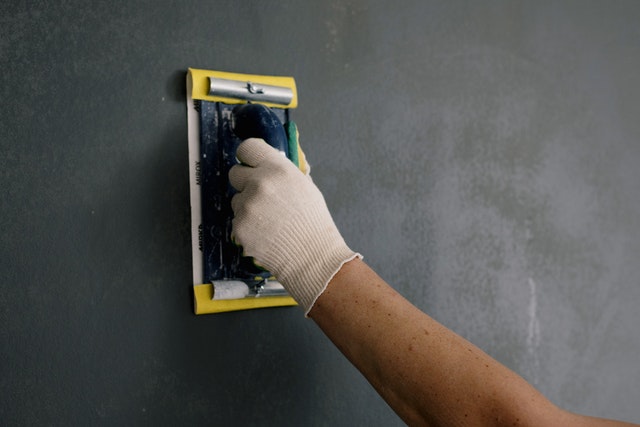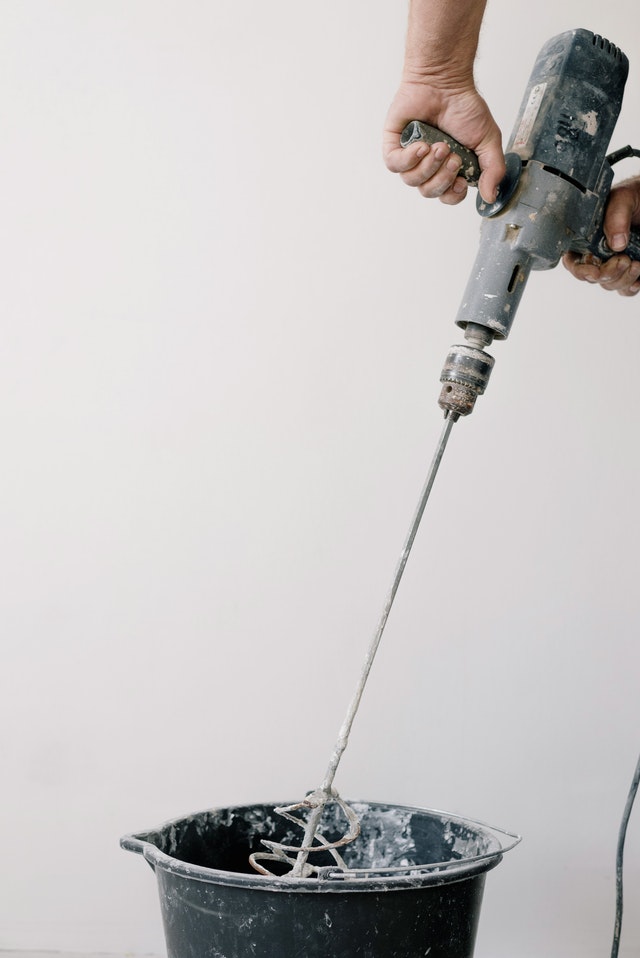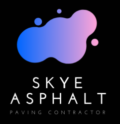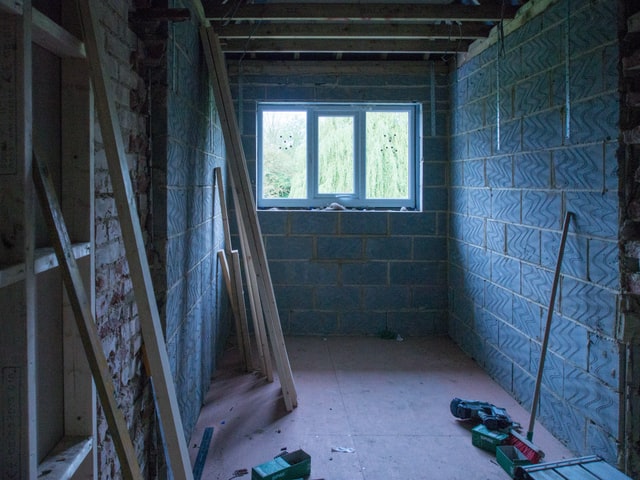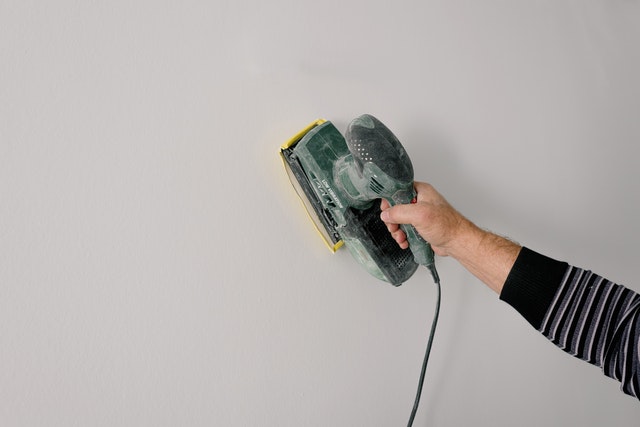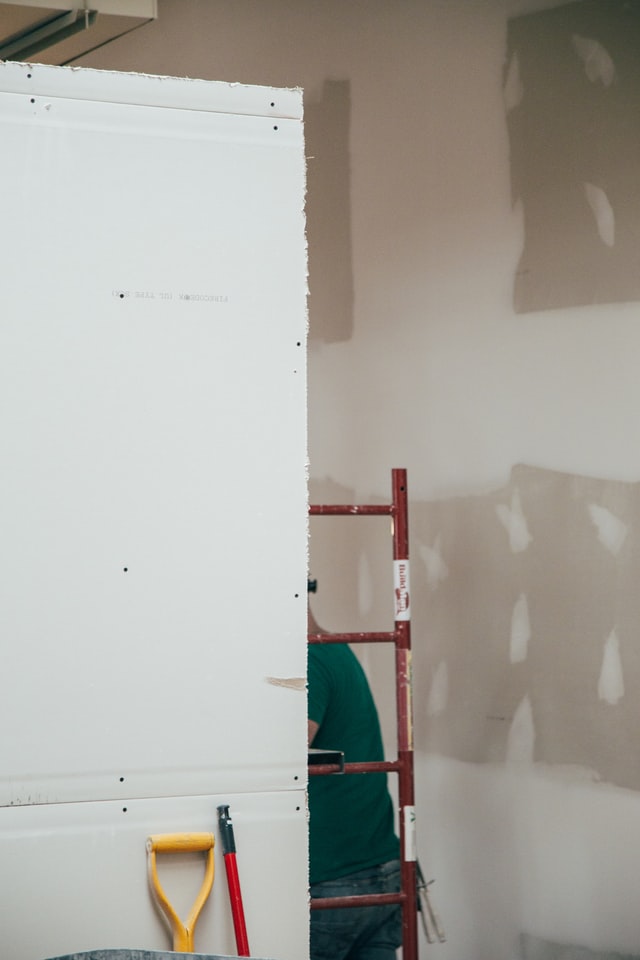When the vertical walls are covered, go back over the corners, using your knuckles to pack them tight. Work from the base to the top.
Using a closed fist, pack the flat surfaces, bottom to top.
Go back and, beginning at the base, cover the gullet and shelf knockouts.
Pack concrete tightly under the top shelf edge that will form the base of the unit.
Packing of the front panel should begin at the shelf edge that will eventually form the base. Again, we want to start with a tight pack for a good crisp bottom edge.
The first pack is complete. Note that we’ve left an organic edge along the ¾ inch edges of the front panel. You don’t want to force a super straight edge that will appear as an artificial seam later.
At this point the concrete is only 1/2“to 3/4″ thick at the larger lumps. It needs to cure for an hour or so. This gives you time to measure and cut wire mesh reinforcement for application at the next stage.
A new mix is created. You want a really stiff, peanut butter-like texture. This is then smoothed on, buttering the inside to make it smooth, with a thin application.
This time you should add polypropylene DuraFibreTM, one big handful per bag. Fiber is not used on the surface areas of the casting because then you end up with a peach fuzz effect. You can burn the fuzz off with a blowtorch, or sometimes they sand out. But mostly the fibers just get in the way.
A creamy texture is desirable.
A thin layer of the new mix is buttered on to create a smooth surface.
Add reinforcement wire to the smoothed inner surface. Add corner reinforcement first. It’s important that there be one piece going through the corners to give them strength.
Wet mix is thrown up on top of the wire, and the 6” putty knife is used to impregnate the wire with the mix, getting all the air out.
This is the perfect time to put an old putty knife with dings and scratches to work.
The top of the bar area is reinforced, here on the bottom of the mold.
The side wall of the center unit is reinforced.
All of the areas have been double reinforced with wire mesh and impregnated with concrete mix.
Build up the edges on the sides of the front panel to be attached.
Also, build up the edges on the upright form where they will meet the front panel.
Get a purchase on the base of the front panel using putty knives.
Prop the panel up on a 2’ × 4’ board and ease to the edge of the upright mold.
More wet mud is used to finish off the bottom to the 2” lip to create a solid base for the unit.
A 1’× 4’ board is used to integrate the corners, drawing the mix from the bottom up. The finished casting needs to cure for 12 hours, or overnight.
